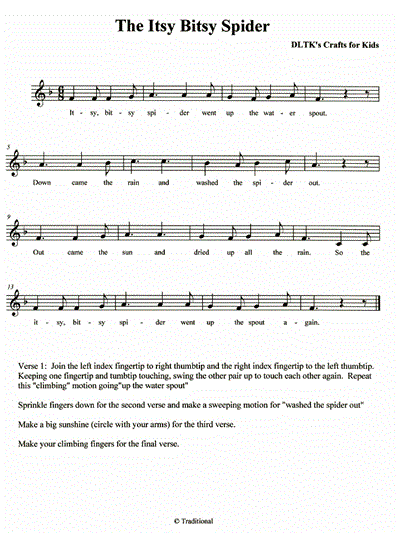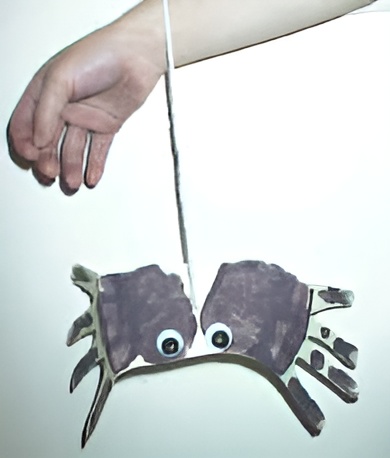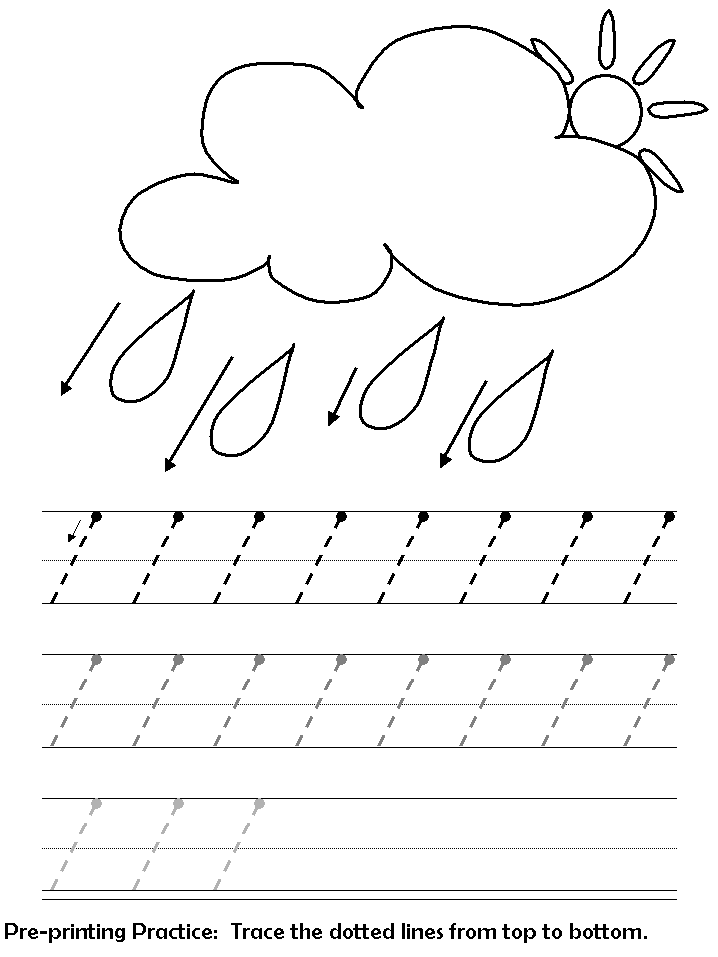DLTK's Songs for Children
The Itsy Bitsy Spider
Listen to the classic children’s song "The Itsy Bitsy Spider".
The itsy, bitsy spider, climbed up the water spout.
Down came the rain and washed the spider out.
Out came the sun and dried up all the rain,
So the itsy, bitsy spider went up the spout again.
Itsy Bitsy Spider Lyrics and Coloring Pages:
Itsy Bitsy Spider Crafts:
Itsy Bitsy Spider Printable Resources:
Itsy Bitsy Spider Printable Resources:
The History of "The Itsy Bitsy Spider"
"The Itsy Bitsy Spider" is a popular nursery rhyme and fingerplay song that has been enjoyed by children for generations. The song describes a small spider's journey as it climbs up a water spout, only to be washed away by the rain and then climbing up again after the sun comes out.
Origins and Variations
- Early References: The exact origins of "The Itsy Bitsy Spider" are not well-documented, but it is believed to have originated in the United States in the early 20th century. It has been passed down through oral tradition, making it a staple in children's music and literature.
- Different Names: The song is sometimes referred to as "The Eency Weency Spider" or "The Incy Wincy Spider" in various regions. These variations all describe the same playful story, with slight differences in wording and tune depending on the region or cultural context.
- Musical Notation: The rhyme has been included in numerous children's songbooks and educational resources, often with simple musical notation that makes it easy for young children to learn and sing along.
Educational and Cultural Significance
- Motor Skills and Coordination: "The Itsy Bitsy Spider" is often accompanied by fingerplay actions that mimic the spider climbing and the rain falling. These actions help young children develop fine motor skills and hand-eye coordination.
- Themes of Perseverance: The story of the spider climbing up the spout despite being washed away by the rain teaches children themes of perseverance and resilience. It encourages a positive attitude towards overcoming obstacles.
- Language Development: The repetitive and rhythmic nature of the song helps with language development, as children learn new vocabulary and sentence structures through repetition and singing.
- Global Appeal: The song's simple and universal theme has allowed it to be adapted and translated into many languages, making it a favorite among children worldwide.
Related Links:
- Little Miss Muffet
- KIDZONE.ws Spiders! Facts, Activities and Photos
- My Itsy Bitsy Spider Mini Book
- Raindrop Lacing Project
- Raindrop Scissor Skills
- Raindrop Water Color Painting Craft
- RECIPE: Spider Cake
- RECIPE: Spider Cookies 1
- RECIPE: Spider Cookies 2
- RECIPE: Spider Legs
- The Rainy Day Poem
- Umbrella Paper Strip Craft
- Water Cycle












